Step by step of a hair transplant
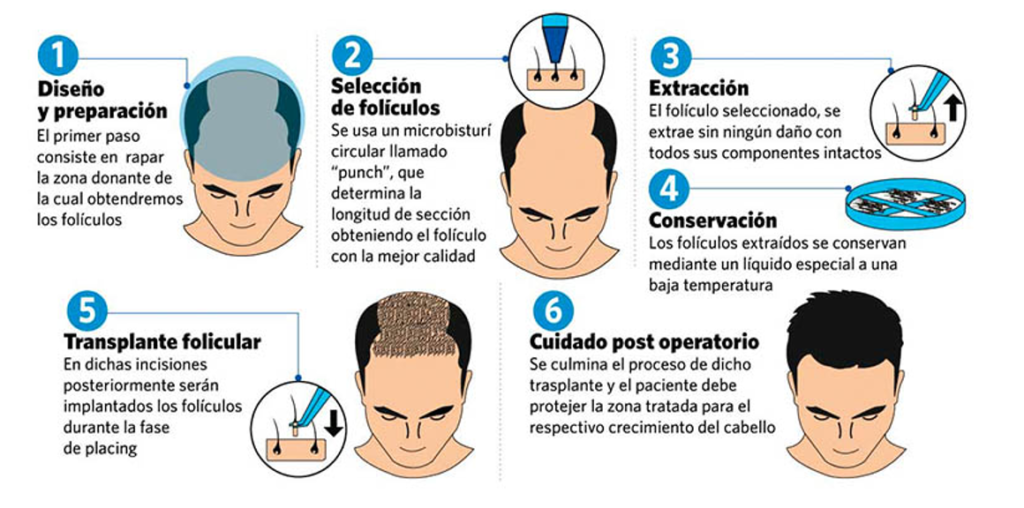
1. Photographing and design of the donor and recipient areas
Taking photographs in predetermined positions and with a standardized background is essential for the patient documentation process and for analyzing the postoperative result. The doctor marks the donor and recipient area with a marker an she designs the limits of the donor area and the recipient area that will receive the hair.
2. Selection of Follicles
After shaving the donor area (posterior and / or lateral area of the scalp), local anesthesia is applied. The donor area is the region from which the hair to be transplanted to the recipient area will be taken.
3. Extraction of Follicles
The extraction is done with the use of surgical instruments called “punchs”.
Punchs cut cylindrical edges; and the range varies from 0.7 to 1 mm in diameter.
After being cut with the punch, the follicular units are removed from the scalp with a surgical forceps.
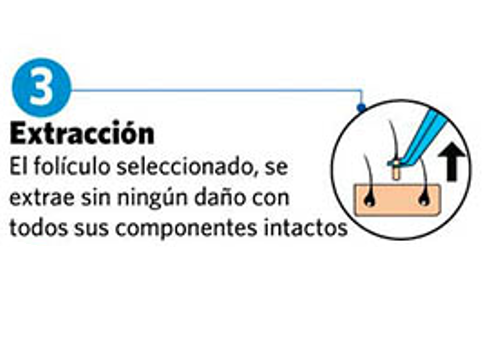
4. Preparation and Conservation of Follicular Units
After extraction, the follicular units are stored in a suitable solution to maintain the vitality of all the follicles. A team member begins the preparation of the follicular units under magnifying loupes.
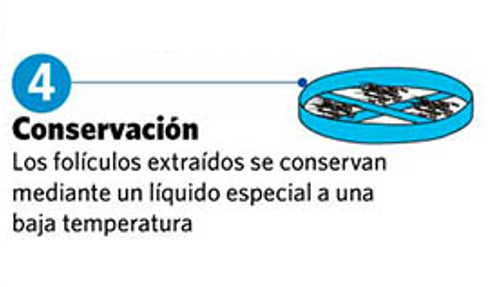
The preparation and proper maintenance of the follicular units are essential for the success of hair transplantation. The follicular units must remain hydrated and with optimal temperature throughout the procedure until the moment of implantation.
5. Implantation of follicular units
At this stage, anesthesia is performed in the receiving area and small holes are made where the follicular units will be implanted.
The incisions are made with microsurgical needles or blades less than a millimeter thick. The depth of the incision is exactly equal to the length of the follicular unit, thus avoiding damage to the blood vessels of the scalp.
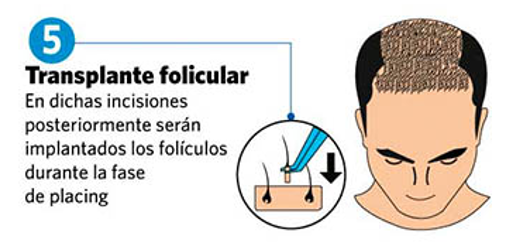
Cuando se hacen las incisiones se debe establecer el ángulo y la dirección del crecimiento del cabello en el futuro, que es similar al cabello natural de la zona implantada.
Las unidades foliculares se implantan una a una en la zona receptora, respetando patrones de distribución, dirección, inclinación y densidad del cabello normal.
6. Implantation of follicular units
Many patients experience so-called “shock loss” (or post-surgical effluvium) between the second and sixth week after surgery. Post-surgical effluvium or shock loss is nothing more than hair loss in the grafted area, or receiving area, or even in nearby areas, and occurs after a hair transplant procedure.
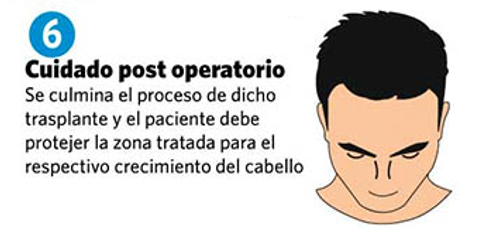
Fortunately, this type of hair loss is almost always temporary and usually occurs from the trauma that the patient’s scalp receives during surgery, hence the word “Shock”.
Being a temporary loss, what is lost is the hair, but never the root. Therefore, the hair will grow back strongly as the weeks after the operation progress.
New hair will grow from these roots. Growth resumes 3-4 months after the procedure, slowly and progressively.
